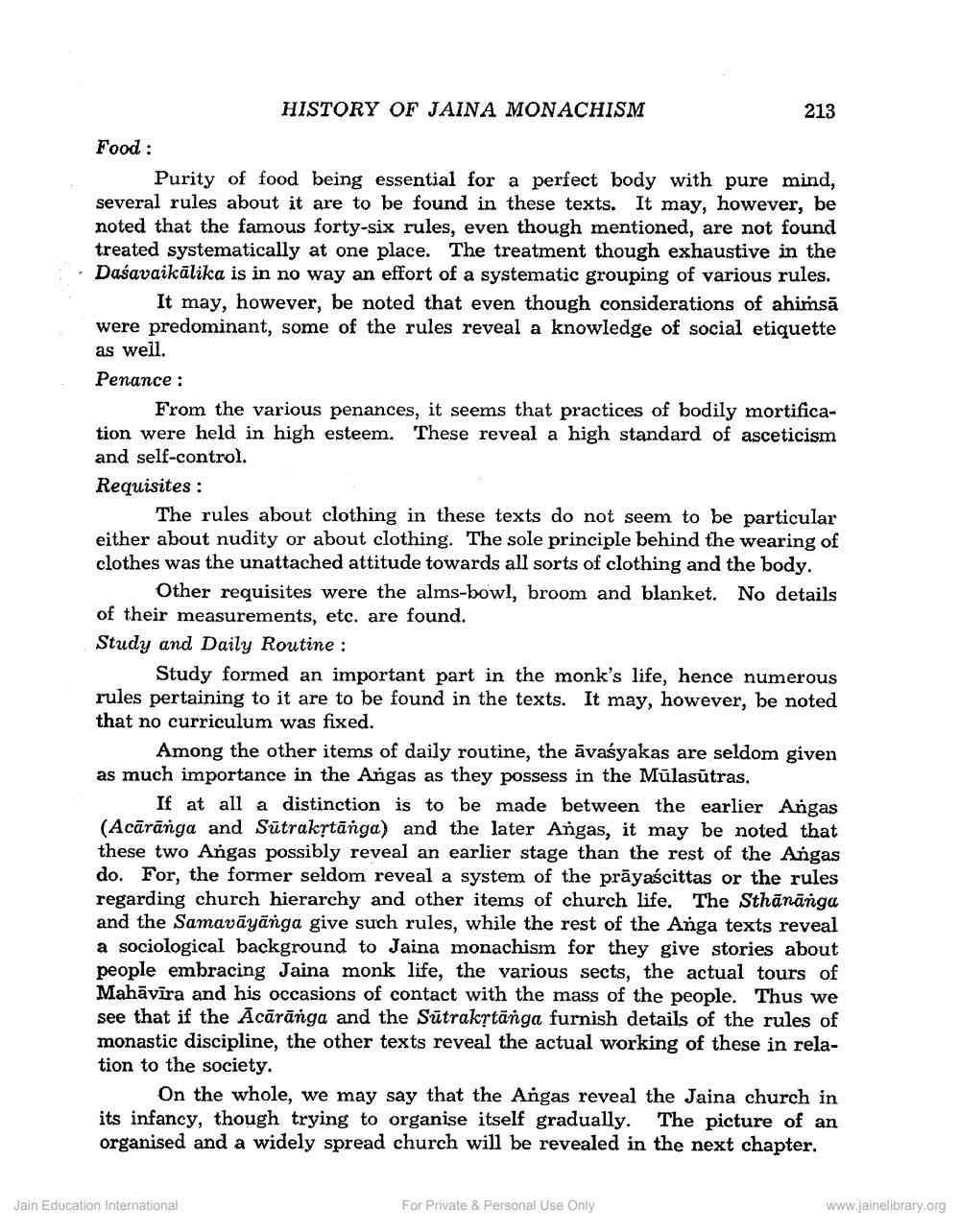________________
Food:
HISTORY OF JAINA MONACHISM
Purity of food being essential for a perfect body with pure mind, several rules about it are to be found in these texts. It may, however, be noted that the famous forty-six rules, even though mentioned, are not found treated systematically at one place. The treatment though exhaustive in the Daśavaikälika is in no way an effort of a systematic grouping of various rules.
213
It may, however, be noted that even though considerations of ahimsā were predominant, some of the rules reveal a knowledge of social etiquette as well.
Penance :
From the various penances, it seems that practices of bodily mortification were held in high esteem. These reveal a high standard of asceticism and self-control.
Requisites:
The rules about clothing in these texts do not seem to be particular either about nudity or about clothing. The sole principle behind the wearing of clothes was the unattached attitude towards all sorts of clothing and the body.
Other requisites were the alms-bowl, broom and blanket. No details of their measurements, etc. are found.
Study and Daily Routine:
Study formed an important part in the monk's life, hence numerous rules pertaining to it are to be found in the texts. It may, however, be noted that no curriculum was fixed.
Among the other items of daily routine, the avaśyakas are seldom given as much importance in the Angas as they possess in the Mülasūtras.
If at all a distinction is to be made between the earlier Angas (Acaranga and Sütrakṛtänga) and the later Angas, it may be noted that these two Angas possibly reveal an earlier stage than the rest of the Angas do. For, the former seldom reveal a system of the prayaścittas or the rules regarding church hierarchy and other items of church life. The Sthānanga and the Samaväyänga give such rules, while the rest of the Anga texts reveal a sociological background to Jaina monachism for they give stories about people embracing Jaina monk life, the various sects, the actual tours of Mahāvīra and his occasions of contact with the mass of the people. Thus we see that if the Acaränga and the Sütrakṛtänga furnish details of the rules of monastic discipline, the other texts reveal the actual working of these in relation to the society.
Jain Education International
On the whole, we may say that the Angas reveal the Jaina church in its infancy, though trying to organise itself gradually. The picture of an organised and a widely spread church will be revealed in the next chapter.
For Private & Personal Use Only
www.jainelibrary.org




